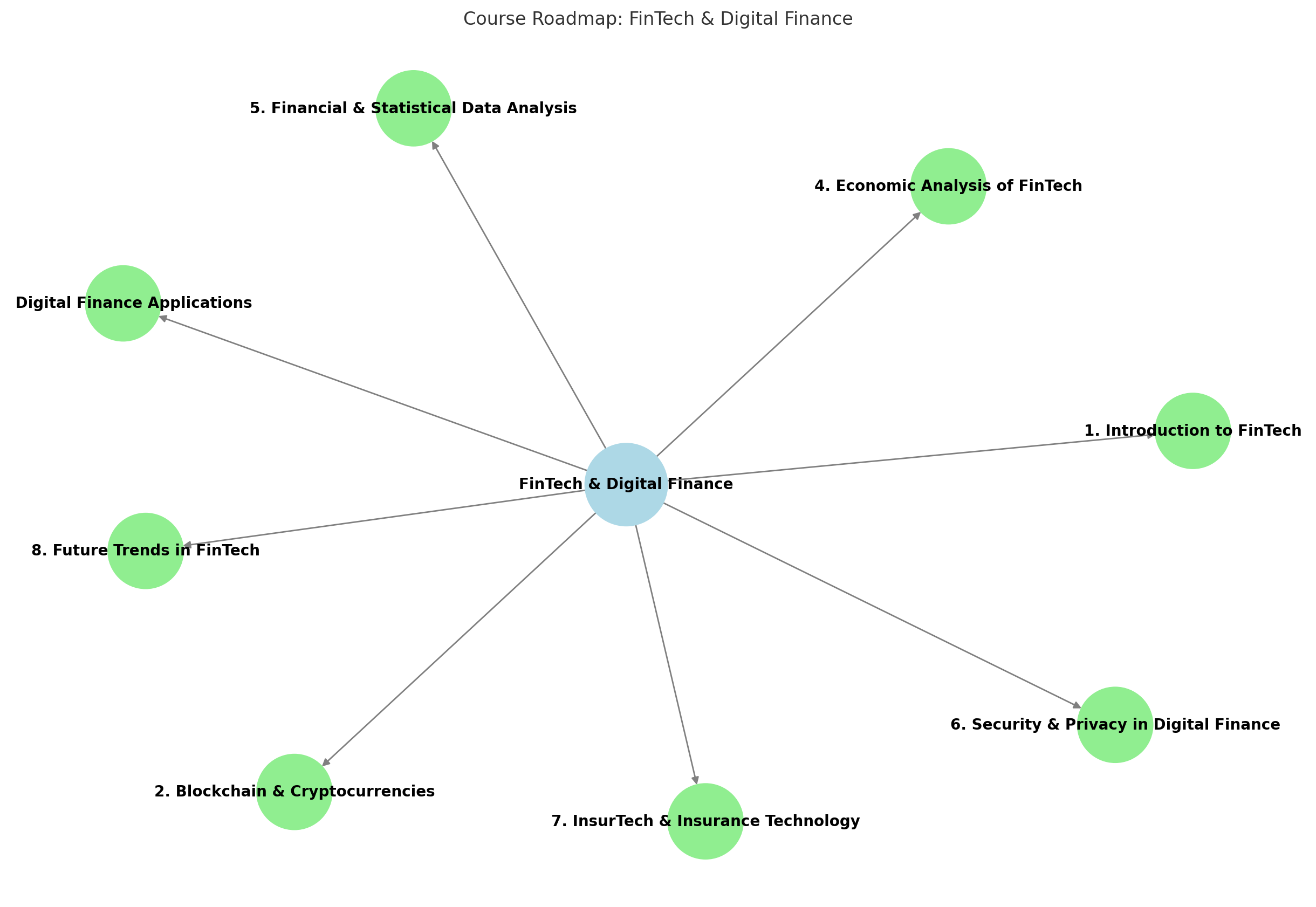Course details
📌Learning Objectives
📌Learning Objectives
By the end of this course, students will be able to:
✅ Understand the fundamental concepts of FinTech and its applications.
✅ Analyze blockchain, cryptocurrencies, and digital banking innovations.
✅ Evaluate economic and statistical methods used in financial technology.
✅ Identify cybersecurity threats and privacy risks in digital finance.
✅ Explore emerging trends in InsurTech, digital payments, and RegTech.
📌 Course Prerequisites
🚀 Prerequisites for this Course:
Students should have a basic understanding of finance and financial concepts, foundational knowledge in statistical analysis and financial mathematics, and familiarity with business and entrepreneurship principles.
📌 Course Content
This course covers key areas of FinTech and Digital Finance, including:
1️⃣ Fundamental Concepts of FinTech & Digital Finance
2️⃣ Cryptocurrencies & Distributed Ledger Technology (Blockchain)
3️⃣ Applications of Digital Finance (Electronic Payments & International Transfers)
4️⃣ Economic Analysis of FinTech
5️⃣ Financial & Economic Data Analysis Using Modern Technologies
6️⃣ Statistical Analysis in FinTech
7️⃣ Security & Privacy in Digital Finance
8️⃣ FinTech & Digital Transformation in Banking & Insurance
9️⃣ Financial Platforms & Digital Markets
📌 Assessment Method
📊 Evaluation is based on:
- Continuous Assessment (40%) – Including research presentations, assignments, and practical exercises.
- Final Exam (60%) – Assessing conceptual and analytical understanding of FinTech topics.
Grade Calculation: The final course grade is weighted based on the proportion of lessons and assignments.

